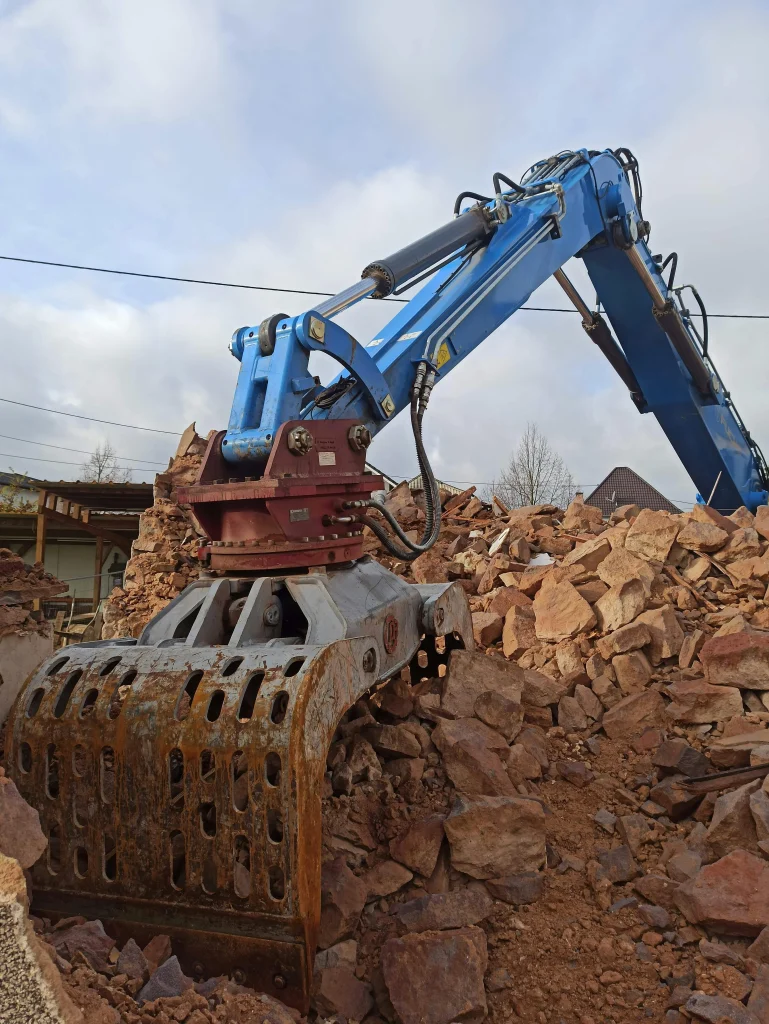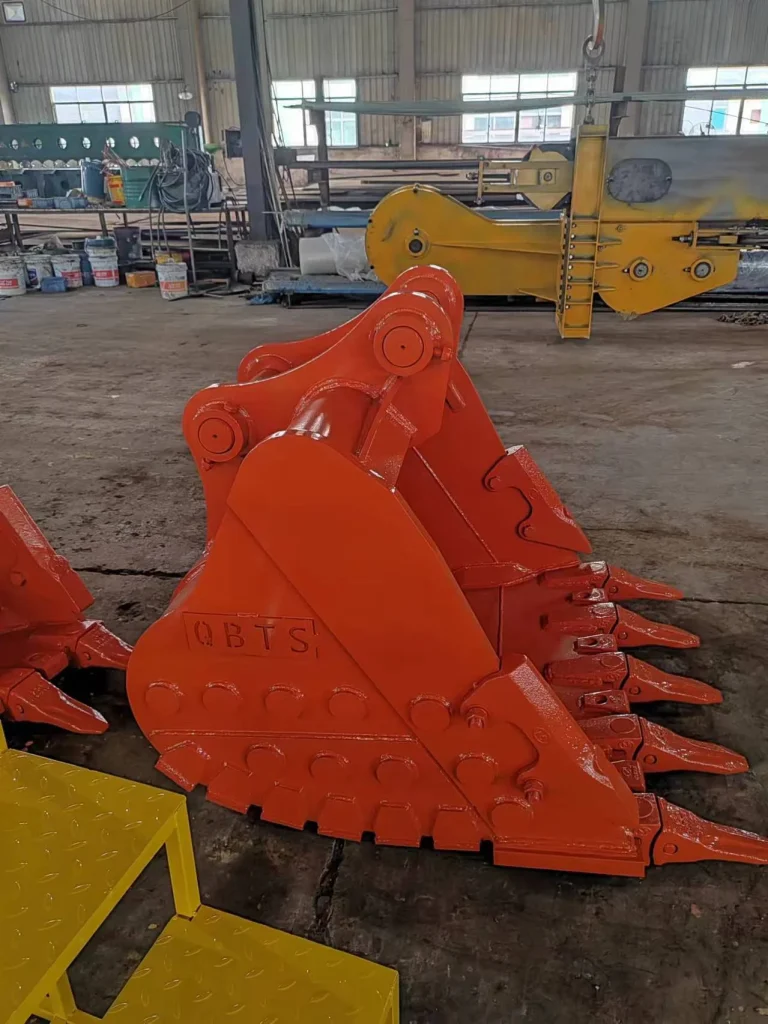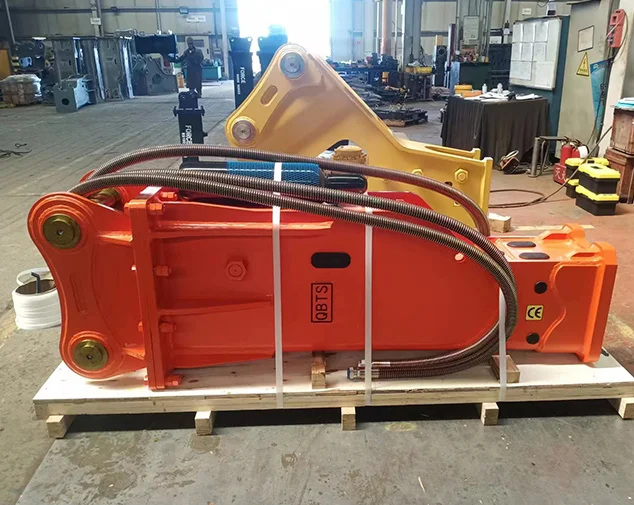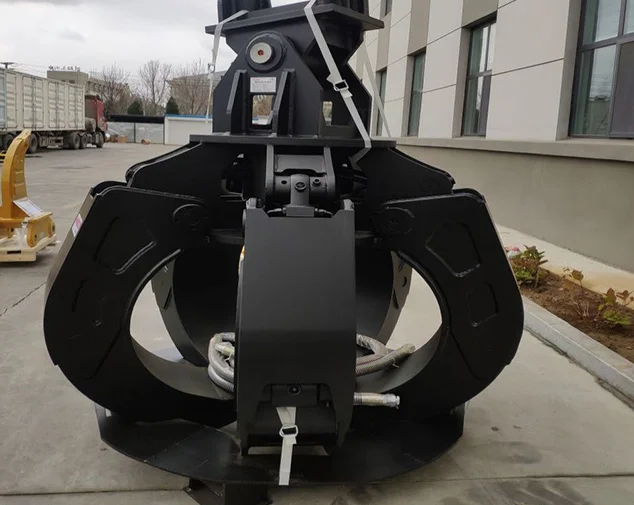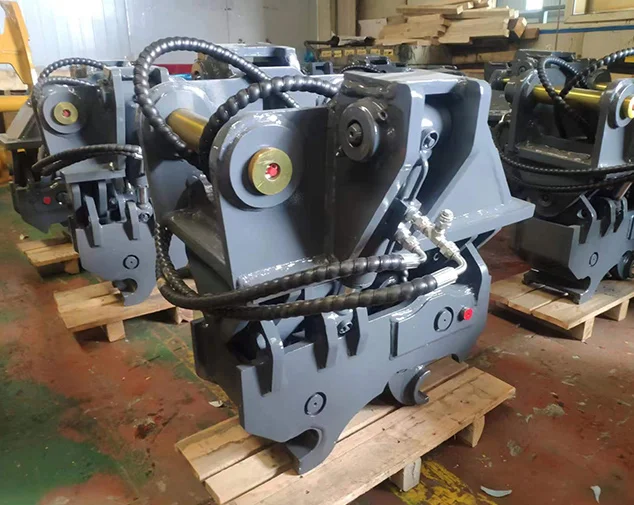The Role of Excavator Attachments in Modern Quarrying Operations
Common Excavator Attachments Used in Quarrying
Buckets
Buckets are probably the most common tools people use with excavators. There are different kinds for different jobs:
General buckets are good for soft stuff like dirt or loose gravel.
Rock buckets are stronger. They can handle hard and rough materials like big rocks.
Skeleton buckets help separate small pieces from large ones.
Kingho makes special buckets. They use strong steel and special protective layers, so the buckets last longer and can carry more.
Hydraulic Breakers
Hydraulic breakers, also called hammers, are made to crush hard rock. They are very helpful when you want to avoid using explosives. These tools are great for digging and making space in tough ground.
The JSB series made by Kingho uses high-pressure parts, strong chisels from other countries, and carefully made parts to break rocks fast and cleanly.
Drum Cutters
Drum cutters are useful when you need to dig in small or tricky places. They cut smoothly and do not make a lot of noise. This is great when working near homes or other buildings.
Rippers and Hydraulic Splitters
If the ground is frozen or very hard, rippers are the right tool. They loosen the earth so other tools can dig. Hydraulic splitters help break big stones into smaller blocks without using force. This can save time and energy.
Grapples, Thumbs, and Sorting Tools
These tools help pick up and move rocks or trash. They are also used to sort different types of materials. Kingho’s grapples are made with strong metal pins and motors that spin all the way around. This makes them very powerful and flexible.
Quick Couplers and Tiltrotators
Quick couplers let you change tools fast. This saves time. Tiltrotators can spin and tilt the bucket. This helps when you need to work at odd angles or on slopes.
Attachment Selection and Best Practices
Picking the right tool for the job is important. You must think about the type of rock, the size of the machine, and the kind of work.
Match the Tool to the Job
- Use breakers or rippers for hard rock.
- Use buckets or drum cutters for softer materials.
- Use grapples or clamps to pick up or sort broken rock.
Make Sure the Tool Fits the Machine
- The weight of the attachment must not be too much for the machine.
- The machine must have enough oil flow and pressure.
- Some heavy tools may need extra support on the excavator arm.
Keep Safety First
- Always check if everything is tight before starting.
- Use couplers that lock in two ways to stay safe.
- Train the workers to use each tool the right way.
Work Efficiency and Cost Savings
The right attachments can help you work faster and spend less money.
Save Time
Switching tools with quick hitches takes just a minute or two. For example, Kingho’s couplers can change tools in under two minutes. This means less waiting and more work done.
Use Less Fuel and Fix Less
If you use the right tool, the machine does not have to work as hard. This saves fuel and means fewer repairs. For example, using a pulverizer instead of a regular bucket to break concrete helps the machine last longer.
One Operator Can Do More
With smart tools, one person can do many jobs. You don’t need as many machines or workers, which helps save on costs.
Cleaner and Safer Sites
Less Dust and Noise
Some tools, like drum cutters and quiet breakers, make less mess. They do not shake the ground too much or make the air dirty. Kingho’s box-type breakers are made to be quieter.
No Blasting Needed
In places where explosions are not safe, tools like breakers and rippers can break rock safely. This is important near towns or parks.
Take Only the Rock You Need
Tools like tilt buckets help you remove good rock while leaving the rest. This means you waste less and get better quality.
New Tech in Attachments
Attachments are getting smarter.
Smart Tools
Some tools now have sensors. They can tell you if something is wrong. They watch for wear and other problems so you can fix them early.
Better Hydraulics
Kingho uses new oil systems and strong seals. This means fewer leaks and longer use.
Control from Far Away
In the future, more tools will work by remote control. This lets people run machines from a safe place, which is better for big or risky sites.
Real-World Examples
Using Breakers Instead of Blasting
A quarry in Guangxi used to blast every day. Then they used the Kingho JSB800 breaker. It cut down noise complaints by 40% and saved 25% on costs.
Ripper vs Breaker
On a stone site, using a Kingho hydraulic splitter instead of a ripper made the job 30% faster. It also gave cleaner rock for crushing later.
Better Rock, Less Waste
A site in Yunnan used tilt buckets and drum cutters from Kingho. They made cleaner cuts and had 18% less waste.
Final Thoughts and Tips
Excavator tools help quarries work better. They save money, time, and make jobs safer. For those who want to do better work and grow, picking good tools from Kingho is a smart move.
Top tips:
Know your rock and pick the right tool.
Buy strong, safe tools with CE approval.
Use smart systems to track your tools and plan ahead.
FAQs
Q1. What tool is used most in quarries?
A: Rock buckets and breakers are used a lot. They help dig and break big rocks fast.
Q2. How can I tell if a tool fits my machine?
A: Look at the weight and oil needs. Check with companies like Kingho for fit guides.
Q3. Can tools replace blasting?
A: Yes. Breakers, rippers, and drum cutters can break rock without using explosives. This is safer and cleaner, especially in cities.

